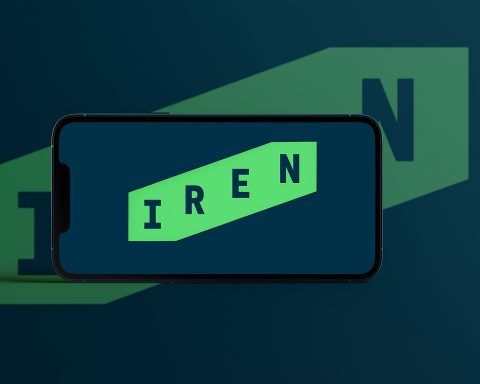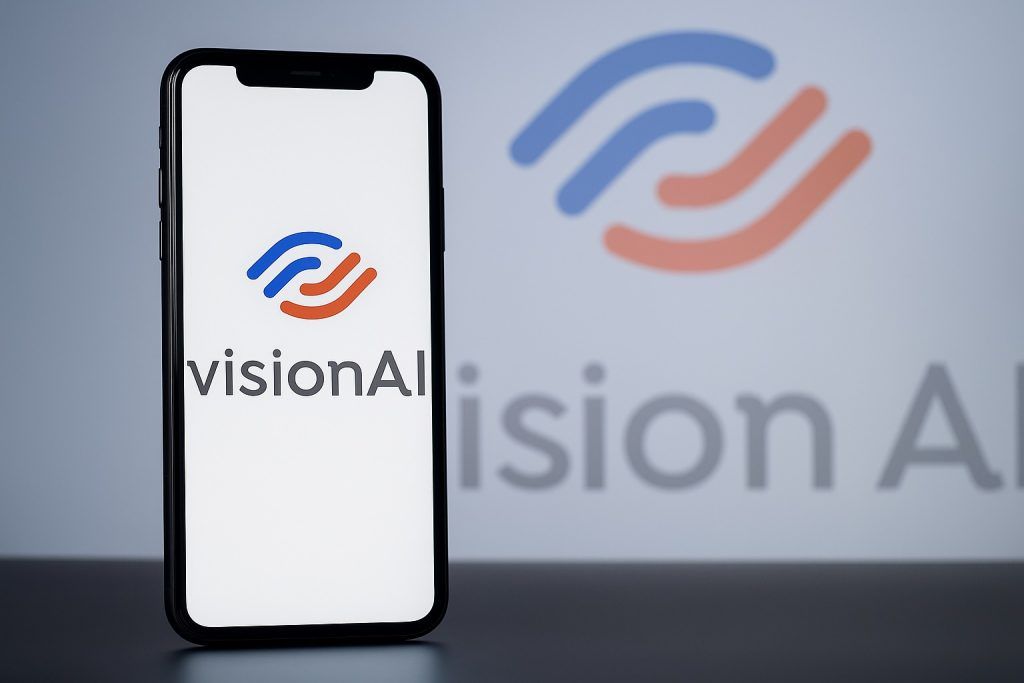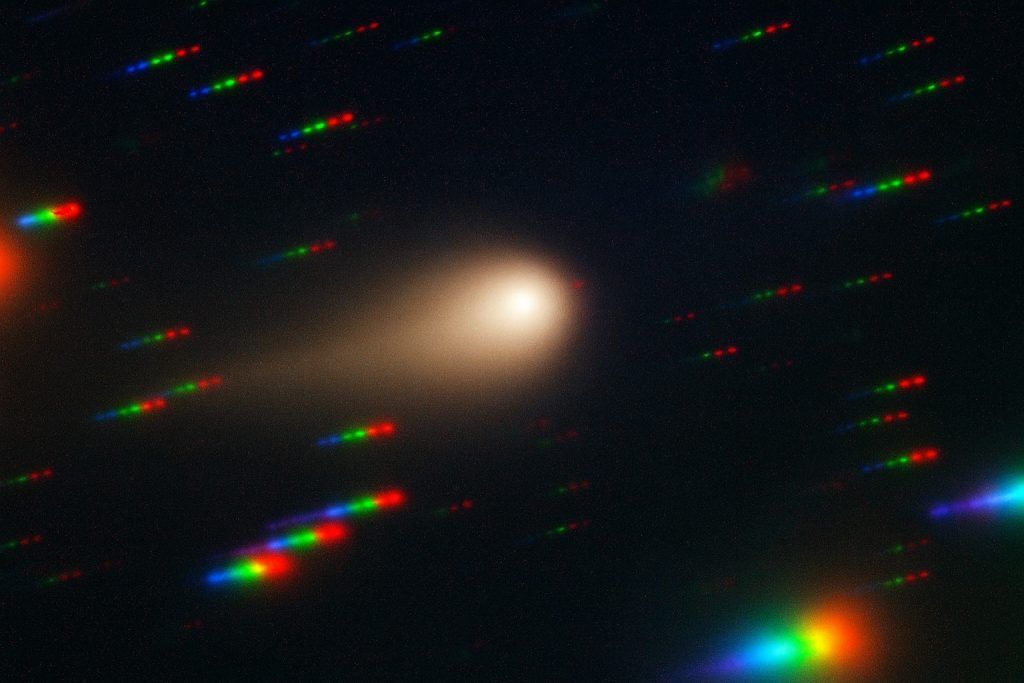Nebius Group (NASDAQ: NBIS) has just delivered one of the most dramatic weeks in the AI‑infrastructure trade:
- a 355% revenue surge,
- a $3 billion AI contract with Meta,
- an existing multi‑billion deal with Microsoft,
…and yet the stock keeps falling.
Today, November 13, Nebius shares are trading back in the high‑$80s, down around 6% intraday and more than 30% off recent highs near $140, even after a year in which the stock has more than quadrupled. [1]
At the same time, rival AI “neocloud” player CoreWeave is also under pressure after slashing capital‑expenditure guidance and trimming its 2025 outlook, forcing investors to choose which high‑growth, high‑spend AI infrastructure story they trust more. [2]
Here’s what’s really driving Nebius stock today, why some analysts now prefer it over CoreWeave, and the one big risk investors are being told to watch closely.
Nebius stock today: NBIS extends its post‑earnings slide
As of late morning U.S. trading on November 13:
- Share price: around $88–$90, down roughly 6% on the day. [3]
- 52‑week range: about $17.39 to $141.10. [4]
- Recent trend: down more than 30% from last month’s peak, following Q3 results and a sector‑wide pullback in AI data‑center names. [5]
Despite that drawdown, Nebius still sports a market cap north of $20 billion and trades at a very rich revenue multiple (price‑to‑sales above 60x on trailing twelve‑month revenue), underscoring just how much future growth is already priced in. [6]
Fresh commentary today from outlets including Motley Fool, TipRanks, 247WallSt and several Seeking Alpha contributors is split between two camps:
- Bulls who see the sell‑off as a chance to buy a “sold‑out” AI data‑center operator with multi‑billion contracts in hand. [7]
- Skeptics who worry that Nebius’ capacity bottlenecks, heavy capital spending and sky‑high valuation could end badly if the AI infrastructure boom cools. [8]
Inside Nebius’ Q3 2025 earnings: explosive growth, costly expansion
Nebius reported results for the quarter ended September 30, 2025, on November 11.
Headline numbers
According to the company’s official earnings release: [9]
- Revenue:
- Q3 2025: $146.1 million
- Q3 2024: $32.1 million
- Growth: +355% year‑over‑year
- Year‑to‑date revenue (nine months):
- 2025: $302.1 million vs. 2024’s $56.3 million (+437%)
- Adjusted EBITDA (loss):
- Q3 2024: –$45.9 million
- Q3 2025: –$5.2 million (an 89% improvement)
- Net loss from continuing operations:
- Q3 2025: –$119.6 million
- Q3 2024: –$43.6 million
- Adjusted net loss:
- Q3 2025: –$100.4 million
- Q3 2024: –$39.7 million
So Nebius is doing two things at once:
- Scaling revenue at triple‑digit rates, largely driven by AI cloud services and GPU infrastructure. [10]
- Spending heavily to build data centers and acquire GPUs, which is widening net losses even as operating metrics like adjusted EBITDA trend in the right direction.
The company’s AI‑focused infrastructure and cloud services now account for the vast majority of revenue, and management has been candid that the business is in an investment-heavy phase. [11]
A miss versus Wall Street expectations
Despite the huge growth, Nebius missed consensus forecasts:
- Analysts were looking for around $155 million in Q3 revenue and a narrower loss than the roughly $120 million net loss Nebius delivered. [12]
- That shortfall — plus guidance some investors viewed as conservative for 2025 revenue (roughly $500–$550 million) — helped trigger the initial 7–8% drop in the stock after the report. [13]
In other words, Nebius is growing faster than almost any traditional cloud provider did at this scale, but expectations — and its valuation — are even higher.
Meta and Microsoft: two hyperscaler deals that define the bull case
The biggest talking point this week is Nebius’ new five‑year, $3 billion AI infrastructure agreement with Meta. [14]
The Meta deal: $3 billion over five years
Nebius will supply high‑performance GPU capacity to Meta (the parent of Facebook, Instagram and WhatsApp) for AI workloads over a five‑year period. Key details from company statements and press coverage: [15]
- Contract value: about $3 billion over five years (~$600 million per year at full run‑rate).
- Timeline: Nebius plans to deploy the necessary capacity within the next few months.
- Constraint: management has said the Meta contract size was limited by Nebius’ available capacity, highlighting how constrained power and data‑center space are right now.
This is Nebius’ second major hyperscaler contract after Microsoft — and it continues a trend where big tech companies diversify away from building all their own infrastructure by renting capacity from specialist AI cloud providers.
The Microsoft pact: at least $17.4 billion, with upside to ~$19.4 billion
Back in September, Nebius announced a multi‑year AI infrastructure agreement with Microsoft: [16]
- Base value: about $17.4 billion over five years.
- Potential value: options could lift the total to around $19–19.4 billion if Microsoft buys additional capacity.
- Infrastructure: Nebius will deliver GPU compute from a new 300‑megawatt data center in Vineland, New Jersey, and potentially additional sites.
Together, the Microsoft and Meta wins effectively pre‑sell a large chunk of Nebius’ planned power capacity over the next several years, giving the company substantial visibility on future revenue — at least if it can build fast enough.
Capacity, capex and ARR ambitions
Across earnings, shareholder letters and third‑party analyses, a few targets keep coming up: [17]
- Annual recurring revenue (ARR): management and some analysts now talk about $7–9 billion in ARR by the end of 2026, roughly an 8x jump from current levels (around $0.5–0.6 billion).
- Power capacity: Nebius aims for 2.5 gigawatts of contracted capacity by late 2026, with about 1 gigawatt of connected power targeted by then.
- CapEx: Q3 capital expenditures jumped to around $955 million, and full‑year 2025 capex is expected to run into multiple billions as Nebius builds out data centers in Europe, the U.S. and beyond.
That spending is funded by a mix of cash (roughly $4.8–4.9 billion on the balance sheet), additional debt, and equity offerings — including a new issuance of 25 million Class A shares announced around the earnings release. [18]
It’s exactly this “build it now, profit later” approach that gives Nebius its upside and its biggest risk.
Nebius vs. CoreWeave: why some analysts now prefer NBIS
Investors hunting for pure‑play AI‑infrastructure exposure tend to compare Nebius with CoreWeave. Both rent out GPU‑rich cloud capacity to hyperscalers and AI builders, and both have seen their stocks soar in 2025.
But recent earnings have driven a wedge between the two names.
CoreWeave’s Q3 wobble
CoreWeave’s Q3 2025 print looked strong at first glance: [19]
- Revenue: about $1.36 billion, up more than 130% year‑over‑year, and ahead of expectations.
- Backlog (remaining performance obligations): surged to roughly $55–56 billion.
- Margin pressure: adjusted operating margin slipped as infrastructure and financing costs rose.
The issue wasn’t Q3 itself — it was the guidance:
- CoreWeave cut 2025 revenue guidance to roughly $5.05–$5.15 billion, from $5.15–$5.35 billion.
- Management slashed 2025 capex guidance by around 40%, from roughly $21.5 billion to $12–14 billion, citing delays from a third‑party data‑center vendor and “powered shell” constraints. [20]
The stock promptly dropped 8–15% on the news and has been volatile since, as analysts debate whether the guidance reset is simply a timing issue or a sign that execution risks are rising in this crowded space. [21]
Why some see Nebius as the “cleaner” story
Several research notes and articles in the last 48 hours — including the Seeking Alpha piece “Nebius Is The Preferred Pick Over CoreWeave Post‑Q3 Earnings” — argue that Nebius now looks like the stronger long‑term bet. [22]
Reasons cited include:
- Balance sheet & leverage: Nebius’ debt‑to‑equity ratio (around 0.3) is still relatively modest given its growth plan, and the company is funding much of its build‑out with equity and upfront contracts rather than leaning as heavily on debt as some peers. [23]
- Margin trajectory: While net losses are widening, adjusted EBITDA has improved dramatically, and some analyses suggest Nebius’ core AI segment is already near break‑even on an EBITDA basis. [24]
- Contract mix: Nebius now has two marquee hyperscaler partners — Microsoft and Meta — with multi‑year deals that ramp up in 2026, while still serving a broad base of AI‑native customers. [25]
- Geographic & power strategy: Nebius has focused heavily on sites with abundant power and favorable regulation, including Finland, Iceland, the UK and upcoming large data centers in New Jersey and other U.S. regions, which some see as structurally advantageous. [26]
In short, the bullish argument is that Nebius is executing on a very similar growth opportunity to CoreWeave, but with slightly cleaner financials and a more conservative capital‑deployment strategy — even if the headline CapEx numbers still look huge.
The “one big thing” to watch: capacity and capital intensity
The Motley Fool article you referenced, “Nebius Group Stock Looks Tempting — but There’s 1 Big Thing to Watch,” zeroes in on what many investors see as the crucial variable: Nebius’ ability to scale capacity fast enough without blowing up its balance sheet. [27]
Putting together comments from the shareholder letter, analyst calls and third‑party coverage, that “one big thing” breaks down into a few related risks:
1. Power and data‑center build‑out must keep up with demand
Nebius’ Meta contract was explicitly capped by the power and rack space it had available, and management has said more than once that demand is not the problem — capacity is. [28]
If projects in places like New Jersey, Finland, Iceland and the UK slip, Nebius could:
- Leave revenue on the table.
- Risk souring relationships with top‑tier customers who want capacity yesterday, not next year.
2. Massive CapEx means constant funding questions
Even if Nebius’ cash balance is robust today, the company is planning multi‑billion‑dollar annual CapEx for several years — on top of the nearly $1 billion it spent in Q3 alone. [29]
That raises ongoing questions:
- How much dilution will additional equity offerings cause?
- How much debt can Nebius layer on before investors worry about an “AI debt club” alongside names like Meta and Oracle? [30]
- What happens if interest rates stay elevated just as the spending peaks?
3. Customer concentration and contract timing
Today, Nebius is heavily leveraged to a handful of giant customers:
- Microsoft and Meta are obvious standouts.
- A relatively small set of leading AI companies make up much of the rest. [31]
If any of those partners slow their AI rollout, delay deployments, or diversify more aggressively among providers like Oracle, Amazon or Google, Nebius’ revenue ramp could flatten just as its data‑center build finishes.
4. Valuation leaves little margin for error
On trailing numbers, Nebius trades at:
- A price‑to‑sales multiple north of 60x,
- A market cap around $22–28 billion depending on the day,
- And no GAAP profitability in sight for several years. [32]
Bullish models assume Nebius hits multi‑billion ARR targets and eventually grows into tens of billions of annual revenue with attractive margins. Bearish takes warn that if AI infrastructure spending normalizes before that happens, the stock could re‑rate sharply lower.
What Wall Street is saying after today’s move
Despite the slide, much of the published research remains upbeat:
- Consensus rating: Around a “Buy” to “Strong Buy”, with data from MarketBeat and TipRanks pointing to a majority of Buy ratings and only a handful of Holds or Sells. [33]
- Average 12‑month price targets: roughly $140–$155, implying 60–70% upside from today’s levels — if the growth story stays on track. [34]
- Key bull points:
- Sold‑out data centers and a strong pipeline of hyperscaler and AI‑native customers.
- Rapid improvement in adjusted EBITDA performance.
- Clear roadmap for expanding contracted power and ARR over the next 18–24 months. [35]
- Key bear points (also voiced in Barron’s, Benzinga and others):
- Widening net losses and mounting CapEx.
- A valuation that already assumes years of flawless execution.
- The possibility that AI infrastructure spending is front‑loaded and proves more cyclical than current hype suggests. [36]
Takeaways for investors watching Nebius vs. CoreWeave
For anyone following Nebius, CoreWeave or the broader AI infrastructure trade, today’s action comes down to a few key questions:
- Can Nebius execute on its massive build‑out?
If it successfully brings gigawatts of power and thousands of GPUs online on time, its Microsoft and Meta contracts — plus smaller customers — could justify its aggressive ARR targets. If it stumbles, the current valuation will be hard to defend. [37] - Is the sector’s recent pullback a buying opportunity or the start of a de‑rating?
Both Nebius and CoreWeave have fallen after their latest reports, despite strong revenue growth. Investors are clearly starting to scrutinize capital intensity, power constraints and long‑term margins more than headline growth rates. [38] - Which model do you trust more — Nebius’ or CoreWeave’s?
Commentators who now call Nebius their “preferred pick over CoreWeave” emphasize its relatively cleaner balance sheet and more disciplined approach to CapEx, even as both companies chase the same AI gold rush. [39] - Are you comfortable with extreme volatility?
Nebius has already moved 5x up and 30% down in 2025 alone. AI‑infra names remain highly sensitive to headlines about contracts, power grids, chip supply and interest rates. [40]
As always, this article is for information and news purposes only and is not investment advice. Anyone considering Nebius, CoreWeave or other AI infrastructure stocks should evaluate their own risk tolerance, investment horizon and diversification, and, if needed, consult a qualified financial professional.
References
1. stockanalysis.com, 2. www.investors.com, 3. stockanalysis.com, 4. www.marketbeat.com, 5. 247wallst.com, 6. stockanalysis.com, 7. 247wallst.com, 8. www.fool.com, 9. www.businesswire.com, 10. www.businesswire.com, 11. www.reuters.com, 12. www.investors.com, 13. www.gurufocus.com, 14. www.reuters.com, 15. www.reuters.com, 16. www.nasdaq.com, 17. 247wallst.com, 18. www.businesswire.com, 19. www.investors.com, 20. www.investing.com, 21. www.investors.com, 22. stockanalysis.com, 23. www.marketbeat.com, 24. www.businesswire.com, 25. www.reuters.com, 26. nebius.com, 27. www.fool.com, 28. 247wallst.com, 29. www.businesswire.com, 30. stockanalysis.com, 31. www.investors.com, 32. stockanalysis.com, 33. www.marketbeat.com, 34. www.marketbeat.com, 35. 247wallst.com, 36. www.barrons.com, 37. convergedigest.com, 38. www.investors.com, 39. stockanalysis.com, 40. www.sharewise.com









